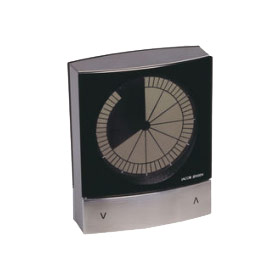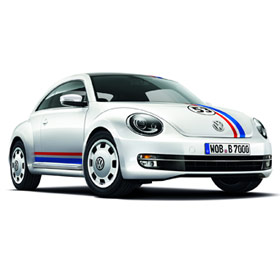
Emotion
If functions are equated with cognition, pleasure is equated with emotion
Vilayanur Ramachandran is a neurologist. Like other neurologists, he focuses his studies on patients with very localized brain injuries. These injuries make patients lose one concrete skill, while the rest of their abilities remain intact. This is how we learn the functions of the different parts of our brain.
This is the story of one of his patients. David, a student at the University of California in San Diego, was involved in a car accident that put him in a coma for several weeks. When David started to regain consciousness and started to recover from his injuries, his mother came to visit him. When she walked in the door, David looked at her and exclaimed:
“Who is this woman? She’s just like my mother, but she’s an imposter. She’s another woman pretending to be my mother.”
As a result of the accident, David suffered from Capgras Delusion, a mental disorder that affects how we identify people. When we are looking at a relative in the face, a very specific area of our brain identifies this face as familiar. The “fusiform gyrus“—that is what our face detector is called—sends this information to our amygdala, which sends back the emotions associated with this face. The combination of these two pieces of information reveals to us the identity of a familiar face.
Ramachandran maintains that in David’s case, the connection between visual recognition and emotional recognition is damaged. David recognizes his mother’s face, but the information that comes from the amygdala is cut off. He does not receive the emotions that he has associated with his mother’s face, so the information NOT COMBINING results in the feeling of being in front of an imposter. We are so tied to our emotions that the feeling that “this is not my mother” is of more value to us than the visual information we are obtaining.
Emotions play a fundamental role in the way we perceive, understand and experience our reality. In the post “Choice,” I mentioned the relationship between emotions and our limitation for processing information. The objects we surround our lives with move us, touch us, excite us or bore us. All products have a purpose, a function, but furthermore, they should be beautiful and have an emotional impact on their users. Planning and designing these emotions should be taken into account as part of the product itself.
Emotions play a fundamental role in the way we perceive, understand and experience our reality. In the post “Choice” I mentioned the relationship between emotions and our limitation for processing information. The objects we surround our lives with move us, touch us, excite us or bore us. All products have a purpose, a function, but furthermore, they should be beautiful and have an emotional impact on their users. Planning and designing these emotions should be taken into account as part of the product itself.
Don Norman and Emotional Design
Don Norman, in his book “Emotional Design” (2004), establishes three emotional levels we can divide our designs into: Visceral, Behavioral and Reflective.
To Norman, Visceral Design is what nature makes. We are biologically predisposed to it—seeing something and wanting it, not worrying about how it works or about its price. We naturally react to visual stimuli that look attractive to us. The dominant factors at this level are the visual aspect, the immediate emotions—without reflection—and sound. The perfect example for understanding this is children’s toys: their shapes, colors, sounds and actions.

Jacob Jensen Clock. Highly visceral and reflective, but not very usable or intuitive..

A good restaurant values presentation, in order to influence consumers’ sense of taste.

The appearance of the iMac meant the resurgence of Apple, even though it used the same components as Apple’s previous computers.

The only motive that spurred Volkswagen to reintroduce the Beetle was the high degree of emotivity the design represented.
“Behavioural design” is based on use, on the product’s functionality. The physical aspect is not relevant; the degree off effectiveness in the task is. The designer focuses on the product being easily and accessibly operational. This approach to product design is fundamental in the field of technology.
An example of the consequences of not observing our users could be the introduction of cup holders in cars, which was largely rejected by German car manufacturers. The excuse was that cars are designed to drive, not to eat in. After a drop in sales in the United States, German cars finally incorporated the now indispensable cup holders.
The significance of things is the basis of “Reflective design“”; what using a specific product says about you. Depending on your age, culture or lifestyle, you use certain products or others, and these send out messages about your identity, thinking, interests or phobias. Many products do not sell because of their attractiveness or functionality; they sell so people may belong to a group or be different from others.
Wearing a Rolex or a Casio on your wrist guarantees that you will know what time it is more or less accurately, but it speaks of two different types of people. The Swiss company Swatch understood this well. They themselves state that they are not a company for watches—they are a company for emotions. They transformed the practical use of watches into an act of fashion.
Few products belong to just one category. Almost all the products that we surround ourselves with have a mixture of several emotional levels in different percentages. For visceral products, there are users with a greater taste for visceral design; the same goes for the rest of the designs. Thus, there are different products for the same functions. They often differ simply in the degree of emotion they awaken in us, and we buy one product or another depending on our tastes and needs.
Sources
- TED Talk – Ramachandran on Capgras syndrome, Phantom Limb Pain and Synesthesia Author: Heidi Allen
- Emotional Design: People and Things Author: Donald A. Norman
- Beyond Usability: Designing Web Sites for Persuasion, Emotion, and Trust Author: Eric Schaffer
- Three levels of Design Visceral, Behavioral, Reflective Author: Henry Lieberman
Follow @NoamMorrissey Tweet